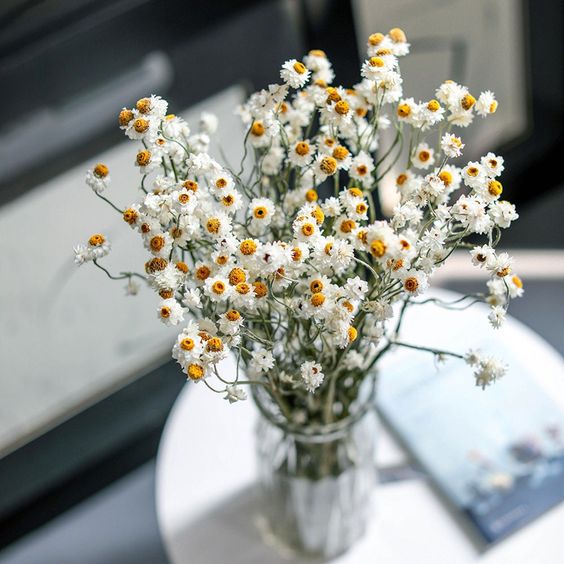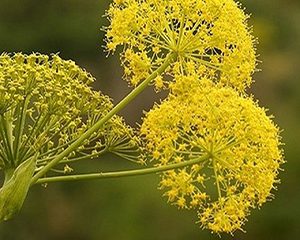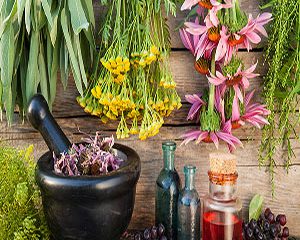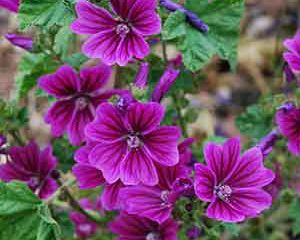Chamomile flower
Chamomile flower specifications
- Scientific name : Matricaria chamomilla
- Order : Asterales
- Family : Asteraceae
- Genus : Chamaemelum
- Species : C. nobile
- English name : Common chamomile, German chamomile
- French name : C. commune, Camomille d ’Allemagne, Matricair camomille
- German name : Gemeine Kamille, Echte – kamille, Kamille
- Italian names : Antemide, Capomilla, Matricaria, Camomilla
- Native : Mediterranean region, Asia Minor, Europe, West Asia, North Africa, North and South America and Australia.
Chamomile is one of the oldest medicinal plants known to man and is scientifically known as Matricaria Chamonail. Among the various types of chamomile, the Roman chamomile type is more famous. The scientific name of this plant is Chamaemelum nobile and it has a fragrant smell that grows in meadows and sandy soils.
The two types of chamomile grow quickly (reaching full bloom within about 10 weeks) and are best planted in the spring via seed. Roman chamomile is often used as a ground cover or creeping plant to soften the edges of a stone wall or walkway, while its German counterpart is more commonly used for making tea.

Chamomile flower is a native plant of the Mediterranean region, but its origin has been reported in Asia Minor. Of course, this plant is widely distributed today in Europe, West Asia, North Africa, North and South America and Australia.
In Iran, different species of matricaria grow in different parts of the country, but the genus Matricaria chamomile is found in the western region of Lorestan between Khorramabad and Doroud, northwest of Andimeshk, in Khuzestan, Salehabad Haftgol, Shushtar, Shiraz, Iranshahr and around Tehran. . Crop production of this product in the country is mainly done in the provinces of Isfahan, Shiraz, Kohgiluyeh and Boyer-Ahmad, Golestan and Hamedan.
read more : Everything about pot marigold flower : How to Plant & care for them
Types of chamomile
Some commonly used species include :
- Matricaria chamomilla Often called “German chamomile” or “Water of Youth”
- Chamaemelum nobile, Roman, English or garden chamomile, also frequently used (C. nobile Treneague is normally used to create a chamomile lawn).
A number of other species’ common names include the word “chamomile”. This does not mean they are used in the same manner as the species used in the herbal tea known as “chamomile”. Plants including the common name “chamomile”, of the family Asteraceae, are :
- Anthemis arvensis, corn, scentless or field chamomile
- Anthemis cotula, stinking chamomile
- Cladanthus mixtus, Moroccan chamomile
- Chamaemelum nobile, Roman Chamomile
- Cota tinctoria, dyer’s, golden, oxeye, or yellow chamomile
- Eriocephalus punctulatus, Cape chamomile
- Matricaria discoidea, wild chamomile or pineapple weed
- Tripleurospermum inodorum, wild, scentless or false chamomile
Chamomile Care
German chamomile ( Matricaria chamomilla ) is an annual plant; however, it usually comes back every year since it self-seeds so readily. You may think it’s a perennial, just like Roman chamomile ( Chamaemelum nobile ), which returns yearly.
Both are easy to care for in a garden and require very few extras to thrive. German chamomile produces more abundant flowers, while Roman chamomile takes the medal for more fragrant blooms. Chamomile isn’t typically great as a bedding plant—it tends to be too floppy and insignificant when paired with more formal and imposing plants. However, it can be used for underplanting in an herb or vegetable garden, to soften rock wall edges, and is a good candidate for containers.
Indoors, chamomile grows best in a south- or west-facing window that gets at least four to six hours of bright sunlight. The soil should be kept moist but not overly wet.
read more : Everything about yarrow flower : How to Plant & care for them
-
Light
Both Roman and German chamomile grow well in either full sun or partial shade. The plants will flower best in full sun, but in hot climates, a bit of partial shade is a better choice ( especially during the hot afternoon hours ) to avoid burning the delicate blooms. More sun typically leads to faster growth, but this plant grows rapidly by nature.
-
Soil
Both versions of chamomile will flower best if grown in rich, organic soil. They can survive in poorer mixtures, but it will often cause their stems to be floppier. Chamomile is not particular about its soil pH, preferring a neutral range of between 5.6 to 7.5.
-
Water
Water young chamomile plants about an inch per week. As they age and become established, the plants are drought tolerant. It’s best to allow plants to dry out between moderate waterings. However, in extremely hot climates, chamomile will appreciate a bit more moisture.
-
Temperature and Humidity
Chamomile is capable of thriving in any summer weather under 100 degrees Fahrenheit. It prefers a moderate temperature range between 60 to 68 degrees Fahrenheit. Because it’s drought-tolerant, it doesn’t thrive in excessively humid areas.
-
Fertilizer
Chamomile does not need fertilizer; it grows quickly without any particular need for feeding.
Export of chamomile plant in Iran
Export of dried chamomile flower to European countries has increased foreign customers for this product. Dried chamomile is exported to Turkey, Iraq and Germany in suitable packaging. Countless medicinal plants, including chamomile, have high exports in the country because Iran, due to its favorable climate, is the cradle of medicinal plants and plants produced in the country are of high quality.
Dried chamomile flower , in addition to its decorative aspect, has many applications in traditional medicine and pharmacy. The reasonable price of chamomile dried flowers has caused the purchase and sale of chamomile dried flowers for export to bring great profits to the exporters and wholesalers of chamomile dried flowers , and in this way, it will also help the country’s economy and currency.

read more : Drying natural flowers | Introducing 8 wonderful ways to dry flowers
How to Harvest Chamomile for Tea
To harvest chamomile flowers for tea, gather them when they are fully open. Pull off the flowers with one hand while holding the stem just underneath the flower with the other. Leave the stems on the plant to encourage new buds to form.
When making tea, the flowers can be used fresh or dried. To dry the flower, lay them on a tray and place the tray in a dry spot for seven to 10 days. Once dried, store the flowers and leaves in a cool, dark environment in an air-tight container (or frozen). If the tea tastes bitter, only make tea from the flower heads ( don’t use the leaves or stems ).
To harvest seeds for the next growing season, wait until the German chamomile flowers dry up on the stem and clip them. Shake the seeds loose and store them in a cool, dry place. Use them within three to four years.
Pruning
If plants get leggy or spindly midseason, cut the stems down about 4 inches from the soil line using sterilized pruners. You can also trim the stem after the first harvest of flowers. Trimming encourages new growth and more flower production. Harvest fresh flowers as they bloom for use in tea or deadhead faded flowers to encourage new buds.
Propagating Chamomile
Propagation methods differ depending on the chamomile type—Roman or German. It’s easiest to propagate Roman chamomile by division. German chamomile best reproduces by seed. Both should be propagated in the early spring after the threat of frost is gone. Dividing Roman chamomile is a good way to keep this rapidly spreading plant from overgrowth.
Here’s how to propagate Roman chamomile by division :
- You’ll need pruners or a spade, potting soil, and at least a 6-inch deep container ( if not planting inground ).
- Roman chamomile spreads out via runners, so cut off a section of the plant with its roots intact. Dig it up and use clippers to separate it from the parent plant.
- For a larger clump, use a spade to slice through the soil and roots. Lift out the section and transplant it by placing the plant and its roots in a soil-filled pot or a spot in the ground with a prepared hole. The plant should sit at the soil level. Fill in areas around the plant with soil.
- Keep the soil moist until new growth emerges.
read more : Everything about red poppy flower : How to Plant & care for them
How to Grow Chamomile From Seed
German chamomile spreads easily by self-seeding. Start seeds indoors about six weeks before the last expected frost. Chamomile seeds need light to germinate, so scatter them and press them firmly onto the soil, but do not cover the seeds with soil.
Water regularly, and they should germinate in seven to 14 days. You can also direct-seed chamomile outdoors, though you’ll get better germination if you do this in the fall and let the seed stratify over winter for a spring crop.
Potting and Repotting Chamomile
Chamomile can grow in any container that is at least 6 inches deep. It requires ample drainage holes, using well-draining, pre-moistened potting soil enriched with fertilizer. If you’re transplanting, dig under and around the plant’s roots. The best time to transplant chamomile is when the plant is only 2 to 3 inches tall. Older seedlings do not transplant well. Also, do not transplant the plant in the active flowering phase.
Overwintering
Chamomile may survive frost but will not survive freezing. Move potted German chamomile plants indoors in winter to keep them alive in colder climates.
Roman chamomile is a perennial down to zone 4 and can remain outside, but it will need wind protection from harsh, drying winds that can kill Roman chamomile. Plant it along a wall for a wind break. If potted, wrap the pot with jute to prevent the soil in the pot from freezing.
Common Pests
Most insects stay clear of chamomile. Chamomile is used as a cucumber pest deterrent. However, aphids and thrips can sometimes be a problem. Both can be washed off the plant or treated with insecticidal soap.
read more : Everything about opium poppy flower : How to Plant & care for them
How to Get Chamomile to Bloom
Chamomile blooms are small with yellow centers and white petals; they look like miniature daisies. The flowers have a sweet, herbaceous aroma, and bloom in the spring and summer. The best way to get your chamomile to bloom is by providing it direct, full sun—it may not bloom if it’s shaded. Other than that, this plant is super-easy : no deadheading or fertilizer needed. Although, deadheading encourages new blooms.
Common Problems With Chamomile
Chamomile is an easy-to-grow herb, both inside and out, and experiences very few problems. But occasionally, it needs a little TLC.
Brown Spots on the Leaves
This can be a sign of several fungal plant diseases, like botrytis blight. It’s remedied by treating your plant with some fungicidal oil.
Leaves Turn Brown and Fall Off
If this happens to your chamomile, it may be getting too much water. Cut back on the water and see if this makes a difference.
Notice : This article translated by google form Persian language. If you have any question or need more information please contact us or add a comment at the bottom of this page.



0 Comments